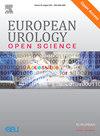Ureteroscopy for Urolithiasis in Pregnancy: Outcomes of a Multicentre Study on Behalf of the European Association of Urology Section of Endourology
IF 3.2
3区 医学
Q1 UROLOGY & NEPHROLOGY
引用次数: 0
Abstract
Background and objective
In patients with stone disease during pregnancy, surgical management in the form of ureteroscopy (URS) can be indicated. However, there remains a relatively limited pool of published data. The objective was to perform a multicentre and international study evaluating the safety and outcomes of URS in pregnancy.
Methods
A retrospective study was performed across 12 tertiary endourology centres for patients undergoing URS during pregnancy over the past 10 yr. Data were collected on demographics, diagnostic imaging, operative findings, and intra- and postoperative complications. Follow-up data on stone-free rate (SFR) and pregnancy outcomes were also obtained.
Key findings and limitations
A total of 146 females underwent URS, and the median age was 28 yr (interquartile range [IQR] 24–32). The majority were in the 2nd trimester (58%), were not presented (74%), and had the surgery performed by an endourologist (81%). Ultrasound was the most popular diagnostic imaging modality. Anaesthesia type was as follows: general (62%), spinal (23%), and sedation (15%). The negative URS rate was 48%. The median operative time was 35 min (IQR 35–45), and 77% were discharged within 24 h. The early and late complication rates were 11% and 2.8%, respectively. Regarding the former, there were two intensive care admissions (Clavien IV). In patients in whom a stone was found at URS, the SFR in terms of zero fragments was 65% and it was 78% for residual fragments of ≤2 mm based on postpartum imaging follow-up.
Conclusions and clinical implications
In the setting of a tertiary centre, URS can be performed safely during pregnancy with a low risk of major complications. Future studies are needed to investigate how the diagnostic algorithm can be improved to result in a lower rate of negative URS.
Patient summary
Managing kidney disease in pregnancy is recognised to be challenging as the surgeon must deliver safe care for both the mother and the unborn child. This is even more so the case when surgery to remove a stone is indicated. This study found that performing surgery using a method called ureteroscopy is safe, but it is recommended to be performed in an expert centre.
输尿管镜检查妊娠期尿石症:代表欧洲泌尿外科协会的一项多中心研究的结果
背景与目的妊娠期结石患者可采用输尿管镜手术治疗。然而,发表的数据仍然相对有限。目的是开展一项多中心和国际研究,评估妊娠期URS的安全性和结果。方法回顾性研究了过去10年在12个三级泌尿外科中心对妊娠期尿路患者进行的回顾性研究,收集了人口统计学、诊断成像、手术结果以及手术内和术后并发症的数据。随访结果还包括无结石率(SFR)和妊娠结局。主要发现和局限性:共有146名女性接受了URS,中位年龄为28岁(四分位数范围[IQR] 24-32)。大多数是在妊娠中期(58%),没有出现(74%),并且由内分泌科医生进行手术(81%)。超声是最常用的诊断成像方式。麻醉类型:一般麻醉(62%),脊髓麻醉(23%),镇静麻醉(15%)。URS阴性率为48%。中位手术时间35 min (IQR 35 - 45), 77%患者在24 h内出院,早期和晚期并发症发生率分别为11%和2.8%。关于前者,有两个重症监护入院(Clavien IV)。在尿路结石患者中,根据产后影像学随访,零碎片的SFR为65%,残余碎片≤2mm的SFR为78%。结论和临床意义在三级医疗中心的设置下,妊娠期尿路手术可以安全进行,主要并发症的风险较低。未来的研究需要探讨如何改进诊断算法以降低URS阴性率。治疗妊娠期肾脏疾病被认为是具有挑战性的,因为外科医生必须为母亲和未出生的孩子提供安全的护理。当需要手术切除结石时更是如此。这项研究发现,使用输尿管镜检查方法进行手术是安全的,但建议在专家中心进行。
本文章由计算机程序翻译,如有差异,请以英文原文为准。
求助全文
约1分钟内获得全文
求助全文
来源期刊

European Urology Open Science
UROLOGY & NEPHROLOGY-
CiteScore
3.40
自引率
4.00%
发文量
1183
审稿时长
49 days
 求助内容:
求助内容: 应助结果提醒方式:
应助结果提醒方式:


